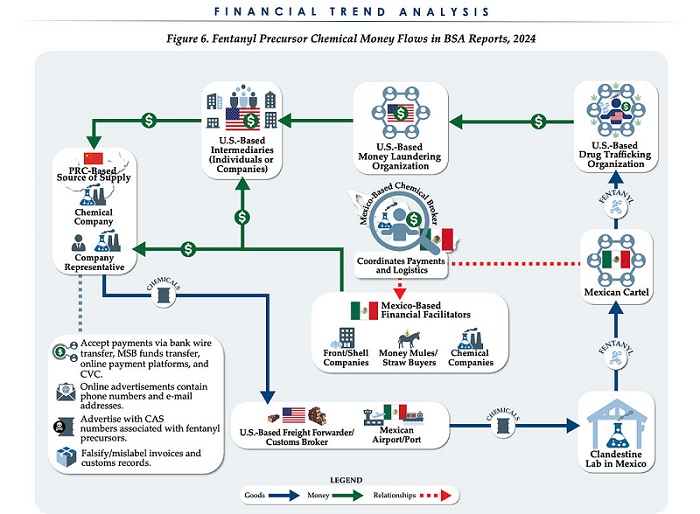Alberta
Province announces $10.7 million boost for women building careers in the skilled trades

Supporting women in the skilled trades
Alberta is providing $10.7 million to Women Building Futures to support women looking to build a career in the skilled trades.
Through Budget 2023, Alberta’s government is investing in women and empowering them to build rewarding careers. Over the next three years, $10.7 million will support Women Building Futures in their work while ensuring employers have the talent they need to grow their businesses.
Women Building Futures is a non-profit organization that helps unemployed and underemployed women explore a future in the skilled trades, where they can gain paid, on-the-job experience and build a career. Through employment training, support services, readiness workshops, affordable housing and more, the organization connects women to employers while they develop job-ready skills.
“On International Women’s Day we celebrate the incredible potential of women’s economic empowerment. By supporting Women Building Futures, Alberta is helping women gain job-ready skills to build rewarding careers in the skilled trades while ensuring Alberta’s prosperity.”
“More women are joining the skilled trades each year and I’m so excited to see that. Women Building Futures does such important work to prepare and support women looking at skilled trade careers and I’m thrilled that our government is supporting their work. This is great news for women, for families, for businesses, and for Alberta as a whole.”
Increasing opportunities for skilled labour
As Alberta’s economy remains strong and continues to grow, it’s important the province’s skilled labour supply grows with it. Partnering with Women Building Futures to increase the number of women in the skilled trades offers new opportunities for well-paying, high-demand work while providing industry with access to crucial talent.
About 5,700 women apprentices were registered in Alberta last year, a 20 per cent increase from 2021. While the number of women continues to increase, there is more work to be done to alleviate the gender gap in the skilled trades.
“Stable operational funding for Women Building Futures during the next three years gives us the flexibility to keep our focus on helping unemployed and underemployed women remove barriers to successful careers in the trades. This is good for women and good for Alberta.”
“Women Building Futures provided me a stable foundation to start my journey as a heavy equipment technician. The program I had the chance to attend provided me with knowledge, confidence and tools to be successful. They have also kept in touch with me every step of the way and have had my success as their priority.”
“Being selected as an Employer of Choice is a great acknowledgement of the success of our partnership with Women Building Futures. This work has been so meaningful to all involved, not only because it’s had such a positive impact on our projects, but because we have seen first-hand the individual transformations of candidates and the ripple effect that has on economic security and well-being of these women and their communities.”
“We are proud that our Graham projects employ women in trades at a rate over twice the national average, and that women have the same opportunities as anyone to build a career in the construction industry. As a WBF Employer of Choice, our partnership with Women Building Futures has helped us to attract and retain a pipeline of excellent talent, improve collaboration and communication on our projects, and deliver better outcomes for our clients. We believe that embracing diversity and maintaining a culture that values and respects all individuals is not only the right thing to do but also the key to continued success as we continue to develop a workforce that is representative of the communities we build and serve.”
Budget 2023 secures Alberta’s future by transforming the health-care system to meet people’s needs, supporting Albertans with the high cost of living, keeping our communities safe and driving the economy with more jobs, quality education and continued diversification.
Quick facts
- Women Building Futures is a non-profit organization with 18 employment programs in six Alberta communities.
- Since 1998, more than 2,700 women have graduated from Women Building Futures training programs.
Alberta
Made in Alberta! Province makes it easier to support local products with Buy Local program

Show your Alberta side. Buy Local. |
When the going gets tough, Albertans stick together. That’s why Alberta’s government is launching a new campaign to benefit hard-working Albertans.
Global uncertainty is threatening the livelihoods of hard-working Alberta farmers, ranchers, processors and their families. The ‘Buy Local’ campaign, recently launched by Alberta’s government, encourages consumers to eat, drink and buy local to show our unified support for the province’s agriculture and food industry.
The government’s ‘Buy Local’ campaign encourages consumers to buy products from Alberta’s hard-working farmers, ranchers and food processors that produce safe, nutritious food for Albertans, Canadians and the world.
“It’s time to let these hard-working Albertans know we have their back. Now, more than ever, we need to shop local and buy made-in-Alberta products. The next time you are grocery shopping or go out for dinner or a drink with your friends or family, support local to demonstrate your Alberta pride. We are pleased tariffs don’t impact the ag industry right now and will keep advocating for our ag industry.”
Alberta’s government supports consumer choice. We are providing tools to help folks easily identify Alberta- and Canadian-made foods and products. Choosing local products keeps Albertans’ hard-earned dollars in our province. Whether it is farm-fresh vegetables, potatoes, honey, craft beer, frozen food or our world-renowned beef, Alberta has an abundance of fresh foods produced right on our doorstep.
Quick facts
- This summer, Albertans can support local at more than 150 farmers’ markets across the province and meet the folks who make, bake and grow our food.
- In March 2023, the Alberta government launched the ‘Made in Alberta’ voluntary food and beverage labelling program to support local agriculture and food sectors.
- Through direct connections with processors, the program has created the momentum to continue expanding consumer awareness about the ‘Made in Alberta’ label to help shoppers quickly identify foods and beverages produced in our province.
- Made in Alberta product catalogue website
Related information
Alberta
Province to expand services provided by Alberta Sheriffs: New policing option for municipalities

Expanding municipal police service options |
Proposed amendments would help ensure Alberta’s evolving public safety needs are met while also giving municipalities more options for local policing.
As first announced with the introduction of the Public Safety Statutes Amendment Act, 2024, Alberta’s government is considering creating a new independent agency police service to assume the police-like duties currently performed by Alberta Sheriffs. If passed, Bill 49 would lay additional groundwork for the new police service.
Proposed amendments to the Police Act recognize the unique challenges faced by different communities and seek to empower local governments to adopt strategies that effectively respond to their specific safety concerns, enhancing overall public safety across the province.
If passed, Bill 49 would specify that the new agency would be a Crown corporation with an independent board of directors to oversee its day-to-day operations. The new agency would be operationally independent from the government, consistent with all police services in Alberta. Unlike the Alberta Sheriffs, officers in the new police service would be directly employed by the police service rather than by the government.
“With this bill, we are taking the necessary steps to address the unique public safety concerns in communities across Alberta. As we work towards creating an independent agency police service, we are providing an essential component of Alberta’s police framework for years to come. Our aim is for the new agency is to ensure that Albertans are safe in their communities and receive the best possible service when they need it most.”
Additional amendments would allow municipalities to select the new agency as their local police service once it becomes fully operational and the necessary standards, capacity and frameworks are in place. Alberta’s government is committed to ensuring the new agency works collaboratively with all police services to meet the province’s evolving public safety needs and improve law enforcement response times, particularly in rural communities. While the RCMP would remain the official provincial police service, municipalities would have a new option for their local policing needs.
Once established, the agency would strengthen Alberta’s existing policing model and complement the province’s current police services, which include the RCMP, Indigenous police services and municipal police. It would help fill gaps and ensure law enforcement resources are deployed efficiently across the province.
Related information
-

 Business2 days ago
Business2 days agoChina, Mexico, Canada Flagged in $1.4 Billion Fentanyl Trade by U.S. Financial Watchdog
-

 2025 Federal Election2 days ago
2025 Federal Election2 days agoTucker Carlson Interviews Maxime Bernier: Trump’s Tariffs, Mass Immigration, and the Oncoming Canadian Revolution
-

 espionage2 days ago
espionage2 days agoEx-NYPD Cop Jailed in Beijing’s Transnational Repatriation Plot, Canada Remains Soft Target
-

 Business2 days ago
Business2 days agoDOGE Is Ending The ‘Eternal Life’ Of Government
-

 2025 Federal Election2 days ago
2025 Federal Election2 days agoBREAKING from THE BUREAU: Pro-Beijing Group That Pushed Erin O’Toole’s Exit Warns Chinese Canadians to “Vote Carefully”
-

 2025 Federal Election2 days ago
2025 Federal Election2 days agoCanada drops retaliatory tariffs on automakers, pauses other tariffs
-

 Daily Caller1 day ago
Daily Caller1 day agoDOJ Releases Dossier Of Deported Maryland Man’s Alleged MS-13 Gang Ties
-

 Daily Caller1 day ago
Daily Caller1 day agoTrump Executive Orders ensure ‘Beautiful Clean’ Affordable Coal will continue to bolster US energy grid





